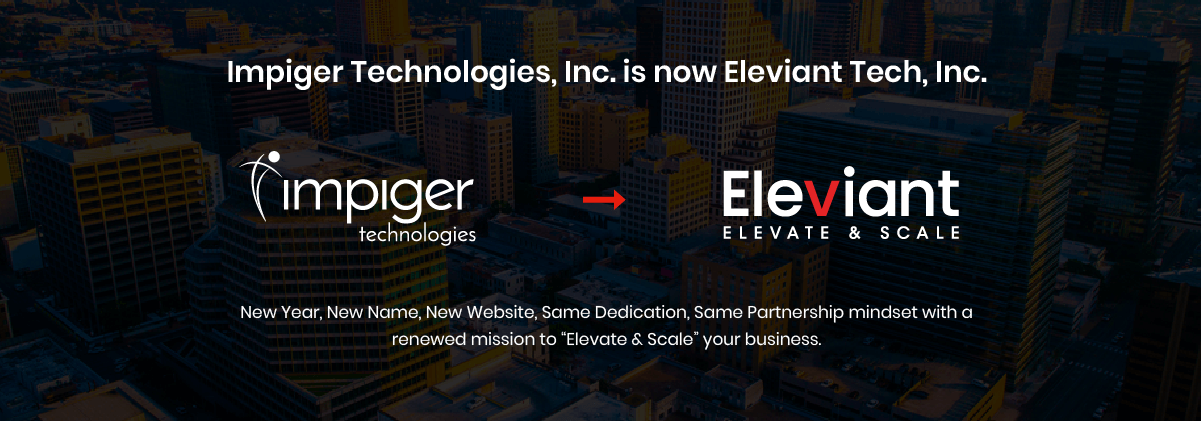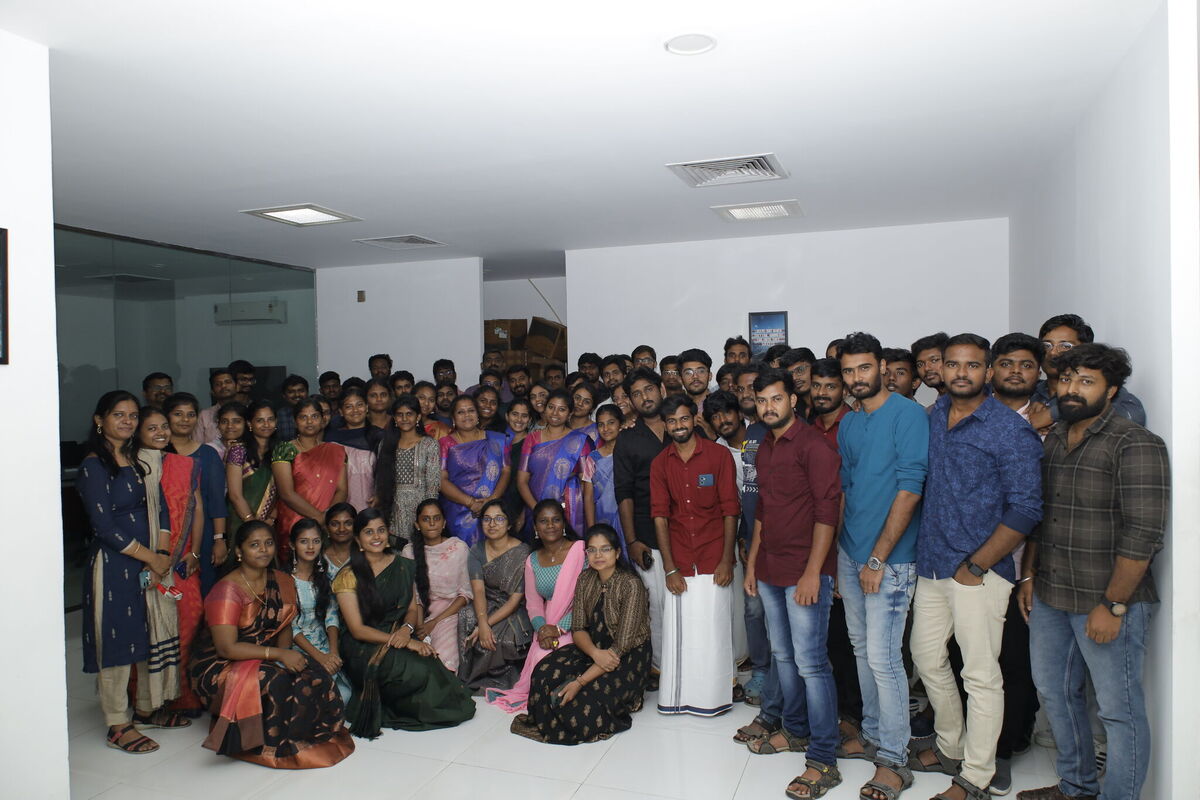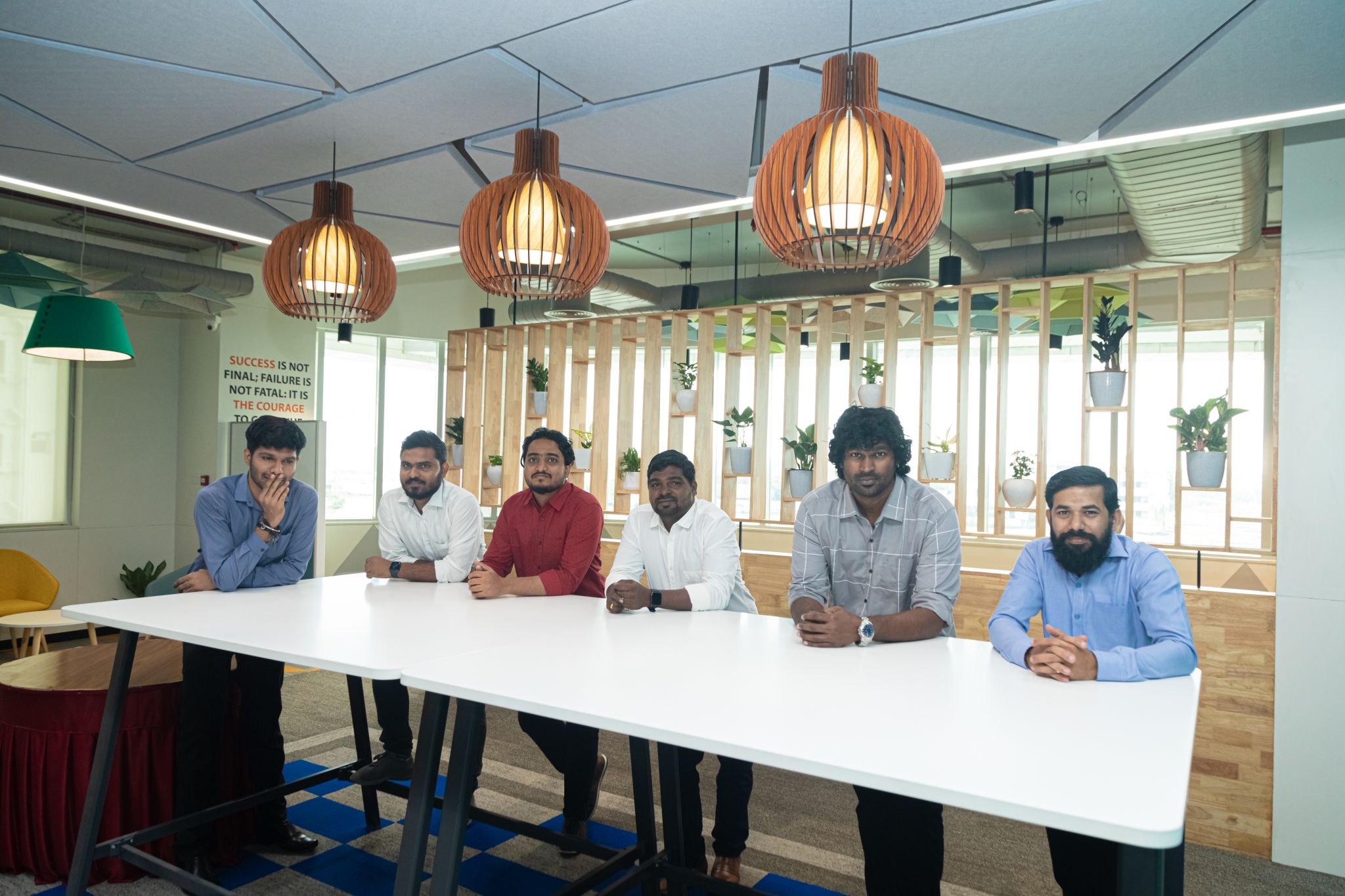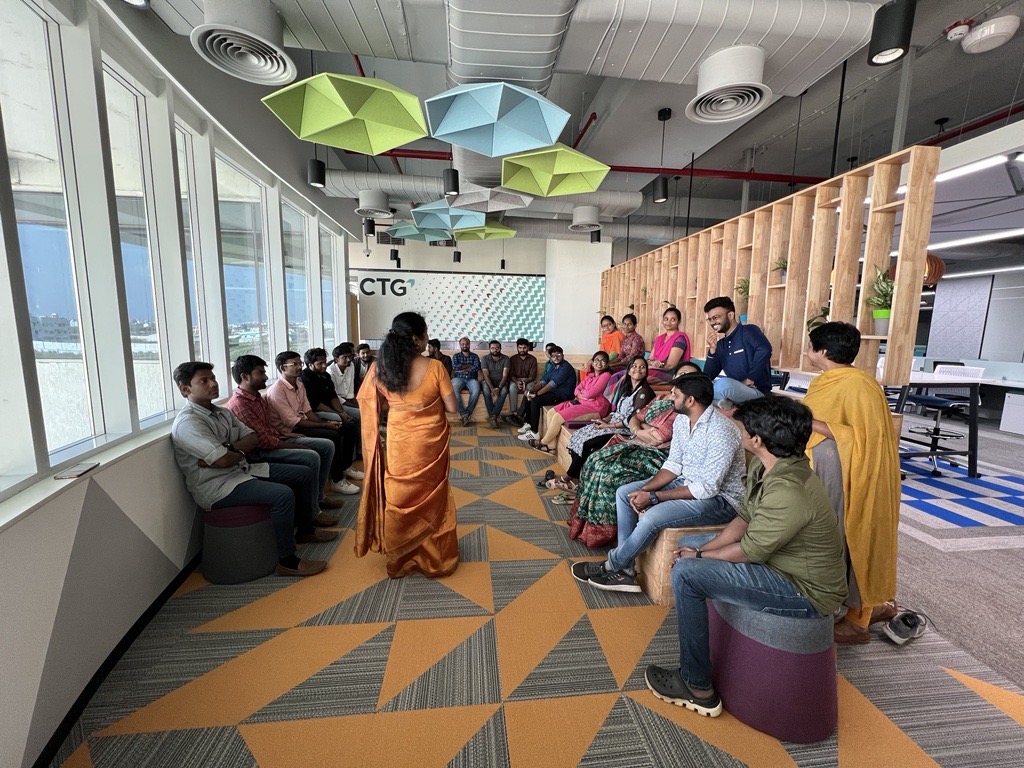Eleviant is to Elevate & Scale. Eleviant Tech symbolizes business transformation and reinforces our mission to help clients elevate and scale their business.
Charting A Digital Transformation Roadmap For Your Company
March 2, 2020
Shefali Mathur

Digital transformation is a process that allows businesses to mold their operations to match the technology pace so that they have an edge above their competitors. Digital transformation is no more a luxury, but a necessity that leverages its foresightedness to strategize your goals and visions that you have set for your organization. Here’s what you can do to negate the existing challenges and achieve with the help of digital transformation:
- Improved business productivity
- Enhanced revenue management
- Greater ROI due to improved people management
The Inception Point
So, how do you go about incorporating digital transformation for your business?
The key is to investigate the internal operations of your organization and tally it with the latest trends. In order to gain context, you need to be aware of the business environment, the latest trends and competitive landscape. While one tool is in vogue today, there might be a developed extension to it tomorrow.
Information is key for organizations and based on their adaptation stage of digital transformation, the value of the data present with them is vital to add a competitive edge. This brings us to the strategic connection between data and digital transformation which can accelerate the growth of an enterprise. In fact, Gartner predicts that by 2022, 90% of organizations will heavily rely on big data to enhance their value orientation.
Therefore, it becomes essential to amalgamate the existing tech infrastructure, with the leadership vision and the current digital landscape for drafting a roadmap.
So where do you stand?
In order to answer the above question, you must consider the following the aspects.
- End-client expectations and level of fulfillment
- Current use of capacities and functionalities – covering applications scope
- Your current scenario – business soundness, complexity, customization, and so on
- Utilization of driving practices – level of operational productivity
Once you are done considering these aspects, draft out a complementing digital transformation roadmap that will not change your existing infrastructure (unlike the popular belief) but in fact, enhance it to tide the current time.
Here’s how you can chart out your roadmap.
Making Digital Vision and Goal
Debatable objectives prompt unclear outcomes. To make an effective venture with an advanced digital program, you must make a digital vision for your organization. What is that your organization will accomplish by embracing digital transformation? What are your organization’s objectives? You must have clarity around them before you continue to the next stage of your digital journey.
This clarity combined with configurative thinking can help you resonate with your client’s issues as well as the employees in your organization who are in dire need of the change. A planned thinking that drives a transformative system can make collaborations between business and IT to tackle the daily challenges.
The Strategic Stage
The strategic stage is all about collaborations and tapping into the strength of each individual as well as teams. This is applicable to all spheres of an organization right from research to process.
This new and improved understanding of the strengths will help policymakers craft new methods of achieving business goals that will comply to the company’s core ideology with an affiliation to digital transformative process, efforts, and investment.
Digital transformation plays an incredibly vital role in helping SMB’s cut down their operational cost and invest their resources in relevant arenas. This will help tap into the team’s ability to function and optimize the entire process effectively. Strategic stages influence information created to drive knowledge that upgrades the process as well as the result.
Partner Identification
Big business’ digital transformation undertaking is about rethinking/tweaking your business which requires a unanimous vote of the top stakeholders. You must recognize a digital champion in your association that will control the whole program.
You must recognize the partners from both business and IT who will be liable for the different aspects of your digital transformation. Club this with an administration program that screens every information influx through the controlling board, ensuring that the task is on track and consistently based on the holistic vision of the company.
Selecting Leaders Who Resonate with Digital Transformation
A stage based advanced change approach needs mindfulness, instruction and preparing all from an experienced mind and a leader. While selecting the leader, the stakeholders need to ensure that communication plays a very important role.
The initial step can be a workshop that brings all the potential people who display a keen sense of configurative thinking, persona mapping, and has a strategic stage outlook. Through this workshop you can adjust and reveal potential subjects for your digital transformation venture and allow them to take charge.
Creating an Organic Way of Doing Business
All organizations that have embraced digital transformation have one common denominator. They all have made an organic communication medium between the company and customers. This is a huge move from the customary channel-based models where the process is direct and highly personalized as per the customer requirement.
At direct level, the digital environment empowers a system of significant worth researchers and suppliers, frameworks that empower productivity among them and basic information that enables a complete collaboration and coordination of significant information across members. So, for entire business to be digitized, it needs the versatility and flexibility of an organic approach.
Digital Transformation – Industry-Wise
We discussed the holistic digital roadmap that an organization is ought to follow. However, if we go in deeper, we will realize that digital transformation slightly differs for every industry. Let us break it down for a better understanding.
Logistics has immense potential to embrace the digital nuances that can help business grow, ensure security and build a robust IT infrastructure. Here are the key elements necessary for a digital roadmap for logistics industry.
- Advanced Analytics: Analytics is the data churner that can help clients analyze their current business parameters and take informed business decisions and optimize their resources.
- New Digital Landscape: The new landscape can improve process efficiency, mitigate issues with respect to supply chain and calibrate the demand-supply ratio that can bring in transparency to the work chain and optimize resources here as well.
- Connectivity: Digitized medium is a transparent medium that simplifies communication and information sharing while enhancing connectivity through clear pathways. This shall negate the delays caused due to lack of information from the respective stakeholder. Now simply enter, process and execute!
- Customer Experience: With a refined work pathway, there is an efficiency which is a primary satisfaction parameter in the checklist for a customer. Since customers can also track their goods and are keeping tabs on the security, the ease of undertaking this process is a great asset for promoting a good customer experience.
- Predictive Maintenance: This has a lot to do with AI and Machine Learning. Digital transformation gives rise to digitally monitoring equipment that enable predictive maintenance and thus, reduce labor and cost involved in the repair jobs.
Digital transformation leads to digital businesses that are redefining sales and the marketing strategies involved in retail. The entire scope is mainly based on customer-orientation, their connection to technology and how they will respond to this amalgamation between retail and tech. Here’s how you can pave way for digital transformation for your retail organization.
- Mitigate Hurdles: Before we plunge into digitizing all the elements, it is important to remove roadblocks along the way to save time and money. These roadblocks can be unawareness of the digital transformation by many, lack of leadership for this new course or the lack of funds & resources for this transformation.
- Make Way for 5G: 5G is the next step in the tech world that will be connecting customers to the retailers. It will be the enable of the entire digital space, supporting the complementing technologies like AR/VR and 3D printing. This is just the tip of the iceberg.
- Combine Online and Physical Store: Once you welcome tech into your business, you will find that it is easy to reach out to customers by an online presence. With everyone embracing the e-Commerce sector, this is no more a novelty. However, it is the combination of physical and retail store which makes things interesting. IoT elements the like Beacon technology creates a virtual grid for customers in the store and helps them understand the product by sending virtual notifications to their phones. In case of unavailability of the product, it also suggests a link to the online location of the product so that the customer gets what he wants.
- Digital Tools for Digital Experience: If you are aware of the latest retail news, the cosmetic giant Sephora is leading digital retail with advanced technology. Sephora’s innovation lab created an AI and AR complementing model called the Modiface that is basically an augmented try on that enables customers to see what lipstick or any cosmetic product suits their face and tone. This proved to be an enormous boost for online sales. Something like this is an integral part of the digital transformation strategy for any retail company looking to increase its engagement.
- Employee Education: Allow your employees to write the tales of digital success by conducting workshops and awareness programs to introduce them to digital transformation and how their roles will be affected as a result. Proper conditioning and guidance is key for a successful digital transformation of an organization.
Manufacturing is quite distinct and has always the first to embrace the previous industrial revolutions. From IR 2.0 to current IR 4.0, the market has a lot of integration that can be on the lines of digital. However, before the digital transformation commences, it is important that these manufacturing signify the right projects for the right plants and remove the unnecessary roadblocks. By deploying this novel revolution, it is can be more shock-proof and can minimize the impact of industrial change Here are the specific elements that can pave way for digital transformation in Manufacturing.
- Connection: Connectivity comes into play when machines need to connect with the transparent digital mediums, the operators and also with the other machines. This connectivity will streamline the entire operation and make it transparent and highly accurate.
- Visibility: Connectivity gives rise to transparency which is synonymous to visibility. This visibility allows organizations to monitor their input and output and understand if the process adhered to the proposed plan. Visibility allows the scope for improvement which gives way to crafting techniques for the ramifications of the existing backlogs.
- Advanced Analytics: We discussed about rectifying the existing issues. These issues can be spotted, thanks to the visibility and then pushed towards resolution via advanced analytics that undertake defect analysis and also enable predictive analysis that warn operators regarding the (if) deteriorating condition of the machines which can fatal as well.
- Efficiency: Data is power that encourages efficiency. Thanks to advanced analytics, the operators are now aware of the issues and can take snap decisions which was earlier, not possible.
Primary issues faced by healthcare professionals across the world is to establish a single line of communication and have data available in real time. Though healthcare has gone digital, it is yet to come out of the excel format and from pages and pages of documents.
Automation should replace manual labor in the case of insurance, inventory and many other branches. Capturing this data is what we need to simplify to put healthcare industry truly on the path to digital transformation.
The digital approach to this market is slightly different.
- Deploying Big Data: Big data is instrumental in combining all the data across all the departments of the healthcare establishment to track all the information transfer and identify patterns for future use.
- Engagement: This encompasses engagement for all employees and patients, circling the operational tools that drive these engagement programs. It is easier to understand the need for automation and how exactly it can affect the prime stakeholders.
- Strategic Enablement: This step is to align all the automotive tools like advanced analytics and cloud to a single purpose aim and This step is to combine the company’s core operations with relevant tools like CRM to drive digital transformation across the entire organizational hierarchy. The strategic enablement will connect the dots across human resources and technology to simplify medical (administrative) process.
Conclusion
Believing in the prowess of digital transformation is the way to go for many organizations. However, many consider this ‘transformation’ as a ‘change’ that can derail the organization from its original goal. That is not the case. Digital transformation is simply a way to fine tune the existing elements and enhance the features in place which can improve the way businesses survive in the current age.
Do you want to take the first steps into a transformative journey? Contact us and understand the strategies that will best suit your enterprise.
Get in touch with our Digital consultants to Elevate & Scale your business
Free ConsultationReady to get interesting insights of Eleviant? Subscribe to our Newsletter
SubscribeRelated Posts
Digital Transformation
Emerging Tech
RPA Automation
Rising Adoption of Automation in Insurance Ag...
Cloud
Digital Transformation
Emerging Tech
Future Trends in Cloud Modernization: What to...
Cloud
Digital Transformation
Emerging Tech
Optimal Scaling: How Companies Can Budget for...
Get in touch with our Digital consultants to Elevate & Scale your business
Free ConsultationReady to get interesting insights of Eleviant? Subscribe to our Newsletter
Subscribe
















































